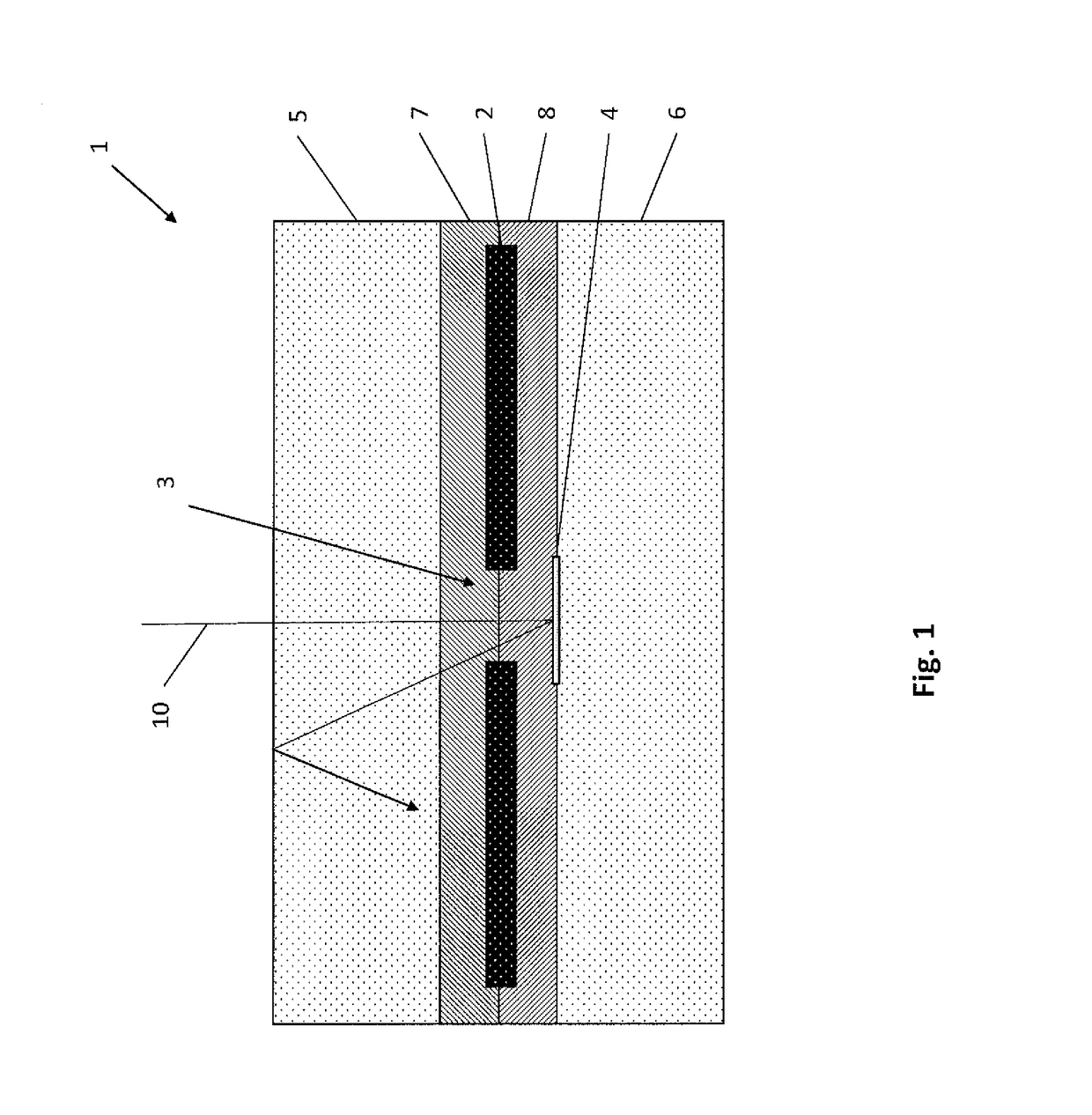Method for manufacturing a solar cell module and solar cell module
a manufacturing method and technology for solar cells, applied in photovoltaics, electrical devices, semiconductor devices, etc., can solve the problems of solar cell modules and power generation loss, and achieve the effect of solar cell arrays being blued
- Summary
- Abstract
- Description
- Claims
- Application Information
AI Technical Summary
Benefits of technology
Problems solved by technology
Method used
Image
Examples
first embodiment
[0042]FIG. 1 shows a schematic cross-sectional representation of a solar cell module 1 according to a
[0043]The solar cell module 1 has two adjoining solar cells 2 in the depicted section of the section plane. A gap 3 is provided between the two solar cells 2. The number of two solar cells is purely as an example. Any higher number of solar cells 2 can also be provided, wherein a gap is respectively provided between two adjoining solar cells. Therefore, the depicted arrangement can safely proceed laterally with further solar cells in the same manner.
[0044]Both the solar cells 2 are embedded in the material of two plastic layers 7, 8. Thus, preferably it could be EVA coatings.
[0045]Further, a front surface layer 5 and back cover 6 close the solar cell module 1 from front and rear, i.e. in the section plane represented upwards and downwards. Therefore, it could
[0046]respectively be a glass layer or a film layer. Further, only the front surface 5 can also be provided as a glass layer an...
second embodiment
[0056]FIG. 2 shows a schematic cross-sectional representation of a solar cell module 1 according to a
[0057]In contrast to the first embodiment, here, the diffuse reflector 4 is disposed directly on a rear-side of the solar cells 2. Preferably, it could thus also be an adhesive tape or an adhesive film with white pigment coating.
[0058]During the manufacture, the reflector 4 is glued on the rear-side of the solar cells 2, before lamination.
third embodiment
[0059]FIG. 3 shows a schematic cross-sectional representation of a solar cell module 1 according to a
[0060]In this embodiment, the reflector 4 is configured as a rectangular body with a thickness spanning the distance between the back cover 6 and the solar cells 2. Thus, simultaneously it is flush with the back cover 6 and the solar cells 2.
[0061]Therefore, the reflector 4 can also be used here additionally as positioning aid for the solar cells 2, during lamination.
[0062]An additional stage could be provided on the reflector 4 for exact positioning of the solar cells 2.
[0063]For manufacturing, the lower plastic layer 8 is separately provided and the reflector 4 is inlaid therebetween. Subsequently, the solar cells 2 is disposed thereupon and the front plastic layer 7 is provided thereon. During lamination, the reflector 4 can then support the solar cells 2 on the rear-side thereof, so that these remain at the level of the reflector 4 in spite of a pressure applied during lamination...
PUM
 Login to View More
Login to View More Abstract
Description
Claims
Application Information
 Login to View More
Login to View More - R&D
- Intellectual Property
- Life Sciences
- Materials
- Tech Scout
- Unparalleled Data Quality
- Higher Quality Content
- 60% Fewer Hallucinations
Browse by: Latest US Patents, China's latest patents, Technical Efficacy Thesaurus, Application Domain, Technology Topic, Popular Technical Reports.
© 2025 PatSnap. All rights reserved.Legal|Privacy policy|Modern Slavery Act Transparency Statement|Sitemap|About US| Contact US: help@patsnap.com



